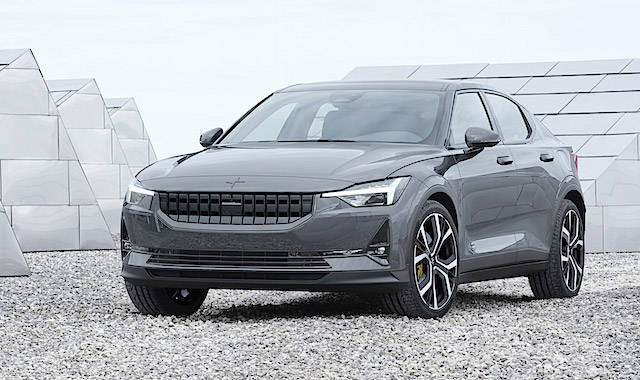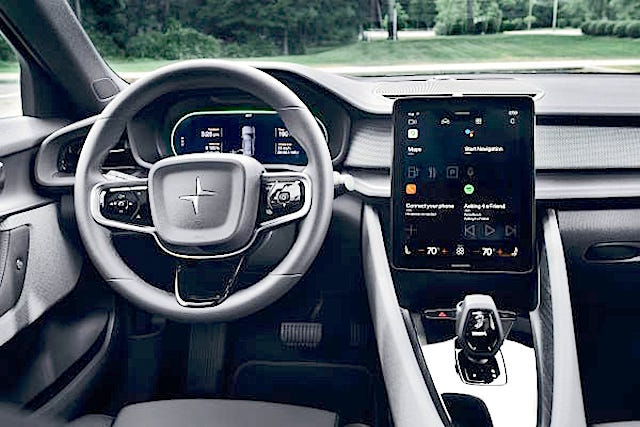
The CO2 carbon footprint of a battery-electric vehicle (BEV) running on power generated by fossil fuels only – coal, oil, gas – is roughly the same over its lifetime as a car with an internal combustion engine (ICE).
But run a BEV on electricity from a mix of fossil fuels and renewables – coal and hydro, for instance – and it emits 14% to 22% lower CO2 emissions than an ICE car.
Power the same BEV on electricity from renewables alone – water, geothermal, or wind power – and its life-cycle carbon footprint is altogether more significant: 53% to 57% lower than an ICE car.
Where the BEV loses whatever CO2 advantages it has over an ICE car, however, is at its birth and death, where the energy – including the mining of rare earths – used to both make and recycle it are collectively higher, a Volvo survey has found.
The Swedish carmaker’s BEV division Polestar tracked its cars’ environmental impact from cradle to grave, using an evaluation process it calls Polestar’s Life Cycle Assessments, or LCA. It didn’t say how it did the maths, only that it connected the dots to come up with a carbon dioxide equivalent number, ‘CO2e’.
LCA is based around the World harmonised Light-duty Test Procedure (WLTP), the standard for determining the levels of pollutants, CO2 emissions, and fuel consumption of ICE, petrol-electric hybrids, and BEV vehicles.
Volvo used four vehicles for the study, three Polestar 2 BEV models – each with different capacity powertrains – and a petrol-powered SUV, the 2.0-litre XC40.
- Polestar 2 long range 78kWh dual motor, output 300kW, consumption 19.5-20.3 kWh/100km, range 480km
- Polestar 2 long range 78kWh single motor, output 170kW, consumption 17.1-18.3kWh/100km, range 540km
- Polestar 2 standard range 64kWh single motor, output 165kW, consumption 17.1-18.0 kWh/100km, range 440km
While the Polestar 2 long range dual motor using a mix of electricity generation has a 14% lower carbon footprint compared with the XC40, the difference increases to 21% for the long range single motor and 22% for the standard range single motor.
If the Polestar 2 vehicles are charged with wind power during their working lives, the carbon footprints are respectively 53%, 55% and 57% lower than the XC40.
By collating the LCA findings into one number, Polestar says it enables consumers to make quicker and more educated decisions when buying a car.
Polestar CEO Thomas Ingenlath (above) has called upon other carmakers to follow the same LCA process. “Carmakers need to take full responsibility. Every week, we see a new announcement that an automaker is changing direction towards electrification,” he said.
“But going electric alone is not enough. Making cars electric is not the end game, it is a starting point. We need to be honest and transparent.”
Volvo’s calculations revealed that the LCAs of the three Polestar 2 cars tested were lower overall than the petrol-powered XC40.
The BEVs all performed better than the XC40 from a climate perspective, regardless of whether the electricity used to power them was generated by wind, fossil fuels or a mix of both.
Compared with the XC40, all the Polestar 2 variants had a lower life-cycle carbon footprint, from a 14% reduction for the 78kWh dual motor with mixed electricity, to a 57% reduction for the 64kWh single motor with wind power alone.
- The petrol XC40 had a carbon footprint of 58 tonne CO2e and a birth/death of 15 tonne CO2e.
- With mixed electricity, the Polestar 2’s carbon footprint is 50/27 tonne CO2e for the long range dual motor, 46/26 tonne CO2e for the long range single motor, and 45/25 tonne CO2e for the standard range single motor.
- On wind-generated electricity alone, the dual motor Polestar 2 had a negligible life-cycle footprint but a birth/death of 27 tonne CO2e. The long range single motor’s birth/death was 26 tonne CO2e, and the standard motor’s birth/death was 25 tonne CO2e.
The number of kilometres needed to be driven by the Polestar variants to reach break-even with the XC40 changes with variant and electricity mix.
The standard range single motor Polestar 2 charged with wind power reaches break-even after 40,000 km, while the long range dual motor Polestar 2 charged with an electricity mix reaches break-even after 110,000 km.
The survey can be concluded thus: BEVs can only deliver a truly significant environmental benefit when powered by renewable forms of electricity generation.
• New Zealand generates around 80% of its electricity from renewables, loosley broken down as 57% from hydro stations, 15% from geothermal fields, 6% from wind. But it is burning ever more coal to maintain electricity supply when renewables are compromised, for example, when there is a fall in water levels feeding the hydro stations.



